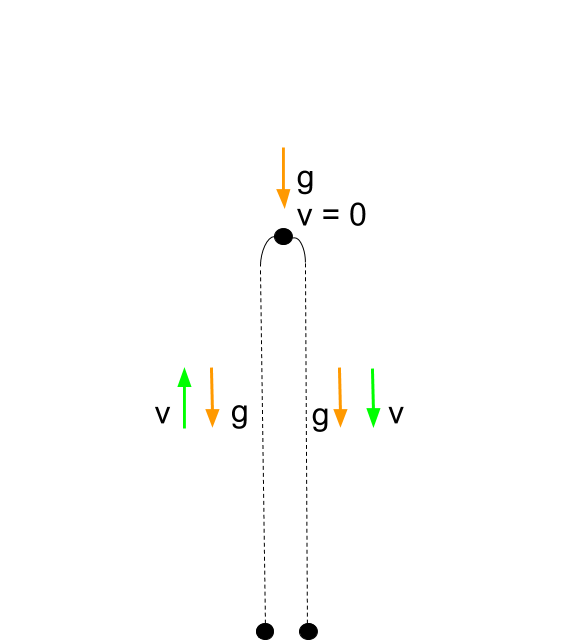Since there is only the gravitational force pulling down the dude will have a vertical acceleration of negative g where g 9 8 n kg or 9 8 m s 2 if i call.
Physics equation for falling off a roof.
The predictability of this acceleration allows one to predict how far it will far or how fast it will be going after any given moment of time.
The variables include acceleration a time t displacement d final velocity vf and initial velocity vi.
V v gt.
From the definition of velocity we can find the velocity of a falling object is.
The above equation can be used to calculate both impact force of a falling ojbect as well as impact force of a horizontally moving object such as in a car crash or plane crash.
So yeah about the roof of a commercial building give or take.
This page describes how this can be done for situations involving free fall motion.
This opens a.
Kinematic equations relate the variables of motion to one another.
Free falling objects are falling under the sole influence of gravity.
When you re calculating force for a falling object there are a few extra factors to consider including how high the object is falling from and how quickly it comes to a stop.
T stands for the fall time measured in seconds.
The acceleration due to gravity is constant which means we can apply the kinematics equations to any falling object where air resistance and friction are negligible.
So let s say that the height is i don t know let s say the height is 5 meters which would be probably jumping off of a or throwing a rock off of a one story maybe a commercial one story building.
The formula can easily be extended to calculate the approximate maximum impact force a k a.
The acceleration of free falling objects is therefore called the acceleration due to gravity.
The force of gravity causes objects to fall toward the center of earth.
V is the initial velocity measured in m s or ft s.
Without the effect of air resistance each object in free fall would keep accelerating by 9 80665.
Peak impact force by multiplying the resulting average impact force by two.
That s about 5 meters would be about 15 feet.
A set of equations describe the resultant trajectories when objects move owing to a constant gravitational force under normal earth bound conditions for example newton s law of universal gravitation simplifies to f mg where m is the mass of the body.
In practice the simplest method for determining the falling object force is to use the conservation of energy as your starting point.
G is the free fall acceleration expressed in m s or ft s.
This assumption is reasonable for objects falling to earth over the relatively short vertical distances of our everyday experience but is.
Each equation contains four variables.
If values of three variables are known then the others can be calculated using the equations.




























